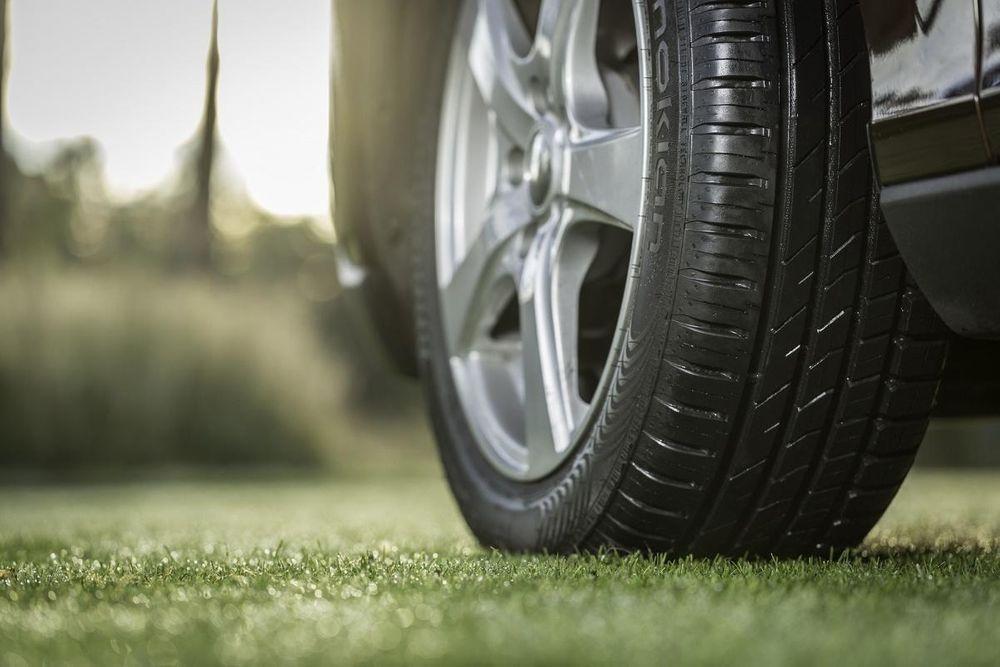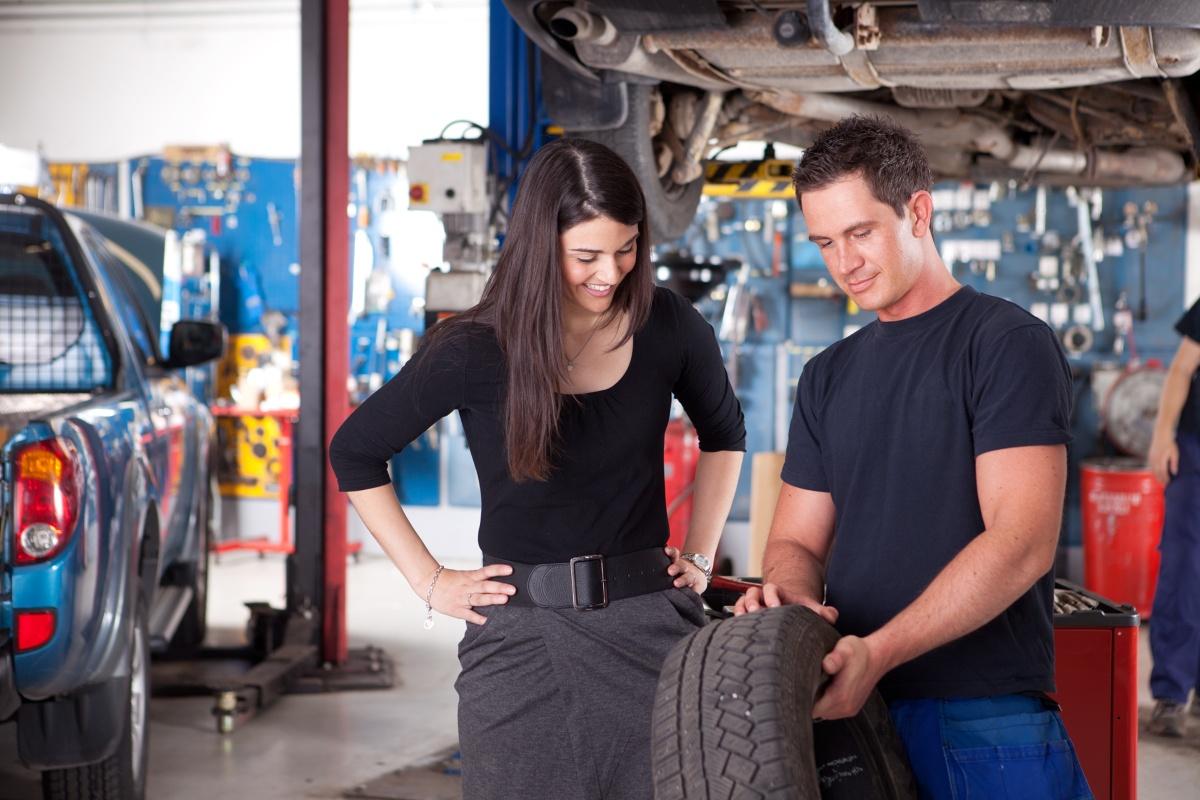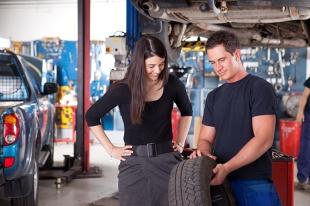
It's time to change tires
 This year, spring will definitely come, albeit in small steps. For all drivers, this is a signal to carry out several basic service work in order to return their cars to full performance and readiness for the new season. One of them is the replacement of summer tires. Like every year, many questions arise, how to choose the right summer tires, what to look for when buying them and how to use them correctly so that they meet their technical requirements 100% and provide maximum driving comfort and safety.
This year, spring will definitely come, albeit in small steps. For all drivers, this is a signal to carry out several basic service work in order to return their cars to full performance and readiness for the new season. One of them is the replacement of summer tires. Like every year, many questions arise, how to choose the right summer tires, what to look for when buying them and how to use them correctly so that they meet their technical requirements 100% and provide maximum driving comfort and safety.
Seasonal tire change - does it make sense?
Until now, many drivers believe that replacing tires with summer tires does not make sense and use one set of winter tires all year round, which is aimed at minimizing the costs and burdens associated with queues at workshops and tire services. However, it should be remembered that the car tire is the only element of the vehicle that has direct contact with the road surface and fulfills a number of technical assumptions of the car manufacturer. Responsible is, in particular, for acceleration and braking, traction control, noise levels. Taking into account the fact that the area of contact of one tire with the road surface does not exceed the surface of the hand of an adult, it is difficult to overestimate their correct selection, taking into account seasonality. Summer tires, in addition to having a different tread structure, are made from completely different rubber compounds adapted to the prevailing temperatures. In the summer heat, a winter tire loses its traction properties on hot pavement and lengthens the braking distance, which directly affects the level of safety. Along with the growing awareness of Polish drivers, the use of universal all-season tires is also declining. In this case, the saying that “if something is good for everything, it is good for nothing” is true.
What tires to choose?
The choice of the right tires is largely determined by whether they will be used in a small city car or a car with a powerful engine with a sporty character. The individual driving style of the driver is also important. The tires are precisely matched to the car manufacturers' assumptions. Therefore, their approval should also be guided by, because the tire closely matches the technical parameters of a particular car model. However, only slight deviations are allowed. The use of so-called substitutes, which are not provided by the vehicle manufacturer, is a direct path to poor driving performance and the provision of false information to safety systems such as traction control or ABS. These systems constantly monitor the behavior of the wheel - its speed and, in some cases, pressure. Information is transmitted to a computer on which certain procedures are performed. Therefore, interfering with a strictly defined size and type of tires is a big obstacle to maintaining stability in emergency situations, such as, for example, sudden braking around an obstacle.
If we are not the first owner of the car, remember not to depend on what tires we have installed on the wheels (the previous owner could have chosen suboptimal or simply wrong tires), just check the information contained on the factory sticker located in the driver's door niche or on fuel tank hatch. Thanks to this, we will be sure which solutions are most suitable for our vehicle. However, if the right choice of summer tires causes problems, now we can take the advice of professionals. – says Jan Fronczak, Motointegrator.pl expert
The technical parameters of both winter and summer tires are determined by several factors. Since November last year, the EU directive has introduced additional labeling of car tires. They define only three parameters regarding fuel efficiency, noise level and wet grip. The labels are thus an initial stimulus for further analyzes, supported in particular by professional product tests.
Which tires should be avoided?
For economic reasons, buying used tires is still popular among Polish drivers. This may be only an apparent saving, because it may turn out that even if the tire looks intact on the surface and has a sufficiently deep tread, it can hide defects inside the structure that drastically reduce its service life. Without proper professional equipment, we are unable to detect them. In addition, used tires are not guaranteed and in case of premature wear, we pay for the tire a second time.
When buying new tires, pay attention to how they were stored. Warehouse conditions must comply with certain Polish stand standards and optimal physical conditions such as air humidity or air temperature.
Car tires, in order to ensure that all technical parameters are met, must not be older than five years. After this time, the rubber wears out and the tires lose their original properties, laid down by the manufacturer. Therefore, you should not buy tires older than two or three years. The production date can be easily checked. This information is placed on the sidewall of the tire under a code, for example, DOT 35 11, where the first two digits indicate the week, and the next two indicate the year of production.
When should I buy a new set of tires?
The average driver judges the condition of his tires only by the tread depth. Many of them decide to replace the tire only when its depth reaches a minimum mark of 1,6 mm. Tire industry experts unanimously agree that tire performance deteriorates significantly with a tread depth of less than 4 mm. Each of its mechanical damage leads to irreversible changes in its structure, and hence in driving performance. Tire repair
with high speeds after being pierced by a nail, for example, should only be considered as a temporary solution. There is a high risk of tire breakage and tread deformation at the most unexpected moment, for example, when the car is heavily loaded on the way to a family vacation.
Damage to the side of the tire, so-called. bumps or bulges, this is nothing more than a mechanical cut of the cord, which occurs when hitting a protruding obstacle or when entering a road pit. Such damage excludes the tire from further use. Damage can also appear on the inside of the tire, making it invisible to the user of the vehicle. That is why it is very important to check the tires regularly and to balance the wheels at least once in a while.
10 kilometer.
Getting the job done matters
Tire mounting should be entrusted to approved workshops with the appropriate equipment. Professional tools are especially important when working with integrated wheel systems (rim, tire and pressure regulator) that allow you to continue moving after a pressure drop.
Tire pressure must be constantly monitored and maintained at a level strictly defined by the vehicle manufacturer. Too low or too high than recommended will significantly reduce tire life and, more importantly, driving safety. For the same reasons, you should remember about regular wheel balancing, i.e. at least every 10 thousand. kilometers.
